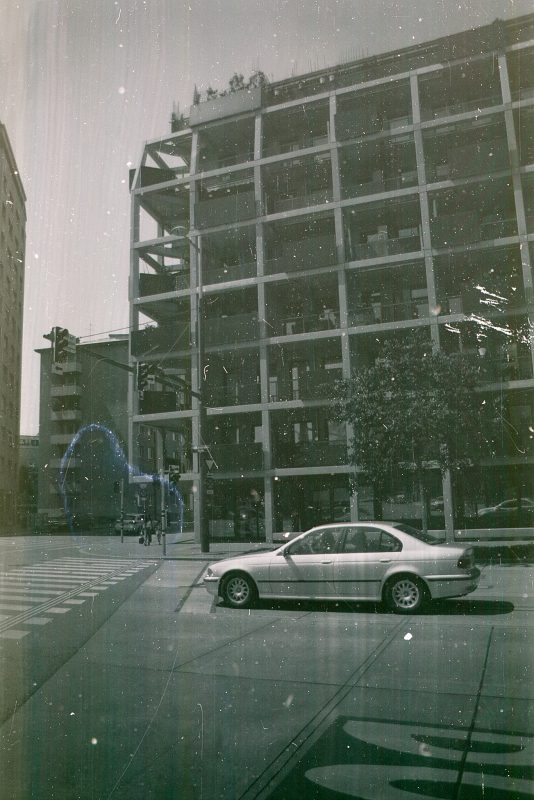Alfred-Adler-Straße
1100 Favoriten
€ 22,00
Pages: 36 + cover
Edition: 5 + artists copy (first edition)
Date: 2020
Film: Mono No Aware C41 6ISO
Camera: Minolta X300
2 in stock
Buy a print
Alfred-Adler-Straße (Favoriten), named in 2009 after the doctor and psychotherapist Alfred Adler (1870–1937) (born February 7, 1870 in Rudolfsheim; † May 28, 1937 in Aberdeen). Adler was the second of seven children of the grain dealer Leopold Adler. After graduating from high school in 1888, Adler studied medicine at the University of Vienna and received his doctorate in 1895. During his studies he met Raissa Timofejewna Epstein, a Russian student, in a socialist student group. They married in Moscow in 1897. There were four children from this marriage.
Adler initially worked as an ophthalmologist. From 1902 Adler took part in the discussion rounds of Sigmund Freud’s Wednesday evening company, but soon developed an independent teaching that deviated from Freud’s. He saw man not determined by instincts, but as a free being who has to solve the cultural tasks that life poses to him. These opposites of views led to a break with Freud in 1911.
He called his teaching individual psychology because in his doctor’s practice he came to the conclusion that every patient should be treated physically and psychologically as something unrepeatable and unique, as an individual and as a whole.
The period between the two world wars was a heyday of individual psychology. As part of the Vienna school reform, Adler and his employees were able to open around thirty educational counseling centers in Vienna. The “parenting training” was understood as “neuroprophylaxis”. There were also psychoanalytically oriented kindergartens for working class children.
Adler wanted to create a realistic psychology that enables people to understand their fellow human beings based on their individual life stories. His books and lectures, deliberately kept in a simple style from 1920 onwards, were intended to make his psychology accessible to everyone and to make it commonplace. In the 1920s he gave a series of lectures at the Volkshochschule in Vienna, which he published in 1927 under the title Knowledge of Human Beings.
Adler also assumed that a lack of development of the female personality, especially in the social order prevailing at the time, led to the destruction of her self-respect and that this could have negative consequences for the upbringing of children. He considered the development of the female personality to be absolutely necessary for the psychological development of women.
In Adler’s eyes, women and men were naturally equal; He therefore strictly rejected Freud’s patriarchal views.
By focusing on strategies of compensation and distinction that arise on the basis of inadequate self-images, Adler can become a forerunner of cognitive behavioral therapy, in which self-image correction also plays a decisive role.
In the early 1930s, Adler was one of the most famous psychologists in the western world.
In view of the threatening conditions in Europe, Adler moved to the USA in 1934. He had been visiting professor at Columbia University since 1926 and at Long Island College since 1932. He was still making lecture tours to Europe. On one such trip, Adler died of heart failure on May 28, 1937 in Aberdeen, Scotland, at the age of 67.
The new street from the Landgutgasse / Sonnwendgasse intersection to Ghegastraße in the 3rd district forms the boundary between the new districts Quartier Belvedere (north of the street) and Sonnwendviertel (south of the street). The new southern terminus of tram line D is located here.







































